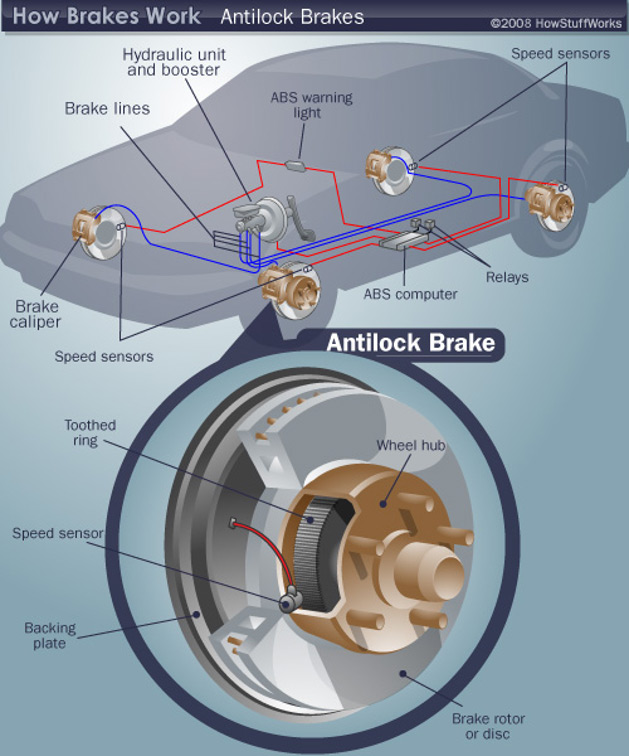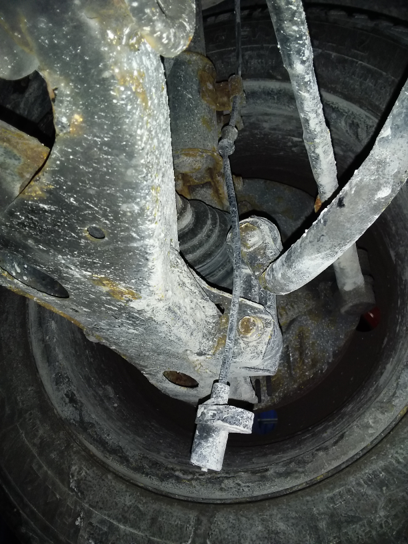21 Jan Why is My ABS Light On?
What is ABS?
ABS stands for Anti-Lock Brake System, a safety feature that helps prevent your wheels from locking up while braking, especially in wet weather. Each tire has an ABS sensor, which detects when your tire begins to lock up during a skid or slide. A skidding wheel can only go straight, making it difficult to steer your vehicle to safety. The ABS will activate and begin to pulse the brakes to prevent skidding; the pulsation occurs at a faster rate than a driver could administer (some vehicles can be 15-20 cycles per second). Essentially, the Anti-Lock Braking System allows you to concentrate on steering during an emergency by allowing you more steering control while it safely brakes your vehicle. It can also increase your stopping distance on wet/snowy roads.
How do I know if my car has ABS?
The federal government required all new vehicles to have ABS in 2011, so most newer cars already have it, but check your owner’s manual, and ask when you are purchasing a new vehicle. Another trick that might work is looking for the ABS light when you turn on your vehicle. For a split second your vehicle will display your dashboard lights to check bulb operation; if your vehicle is equipped with ABS, you will see the ABS light illuminate briefly.
What does it mean when my ABS light turns on?

When your ABS light is illuminated while your vehicle is running, it means the system is not working and it should be checked out by a certified technician.
The ABS light could indicate:
- An Electrical Fault
- Defective Wheel Speed Sensor
- Defective Power Relay for the ABS module or pump
- A lower than normal fluid level in a dedicated ABS fluid reservoir
Do I pump the brakes when the ABS light comes on?
You’ve probably heard to pump your brakes while sliding/skidding, especially if you’ve lived here in Michigan your whole life. By applying pressure to your brakes and then releasing, you are able to better steer to control your vehicle. You do NOT need to pump the brakes yourself if you have ABS because once activated, the ABS will automatically pulse the brakes for you. Just press your brake down firmly and let the system do the work. You may notice a slight pulsation in your brake pedal when the ABS has been activated, and this is completely normal. If you do pump the brakes, it may just take longer to stop.

www.howstuffworks.com
What do I do when my ABS light comes on?
Check to see if there are any other brake lights/dashboard lights on at the same time as the ABS warning light. It could look like one of the following.
If it’s the only light on:
This means that the Anti-Lock Brake System is non-operational and will not work. While your vehicle’s brakes should operate as normal, be very careful on your way into the shop. A certified mechanic should diagnose the cause of the ABS light coming on. It could be due to:
- Worn Brake Linings
- Air or Dirt in the Brake Fluid
- The ABS Sensor is no longer attached
If it’s NOT the only light on:
If there is also a brake light, this could mean your brakes do not work and your vehicle is not safe to drive. It could also mean there could be an issue with:
- Basic Service Brake System
- Hydraulics
- Serious Brake Fluid/Pressure Loss
We would recommend towing your vehicle to your trusted mechanic shop to begin the diagnosis. We have had great luck with Sakstrup’s towing if you are in need of a tow company here in Ann Arbor, MI.
What could happen if my ABS isn’t working?
For your safety and the safety of others, you should bring your vehicle in for a diagnosis. Better safe than sorry! Without ABS, vehicles can skid out of control during a panic stop, especially on wet pavement. If your wheels lock up, it makes it difficult to steer to safety.
If your ABS light has come on, please give Ron’s Garage a call at 734-662-8379 to book your diagnosis appointment as soon as possible.

ABS Sensor dangling under vehicle at Ron’s Garage


